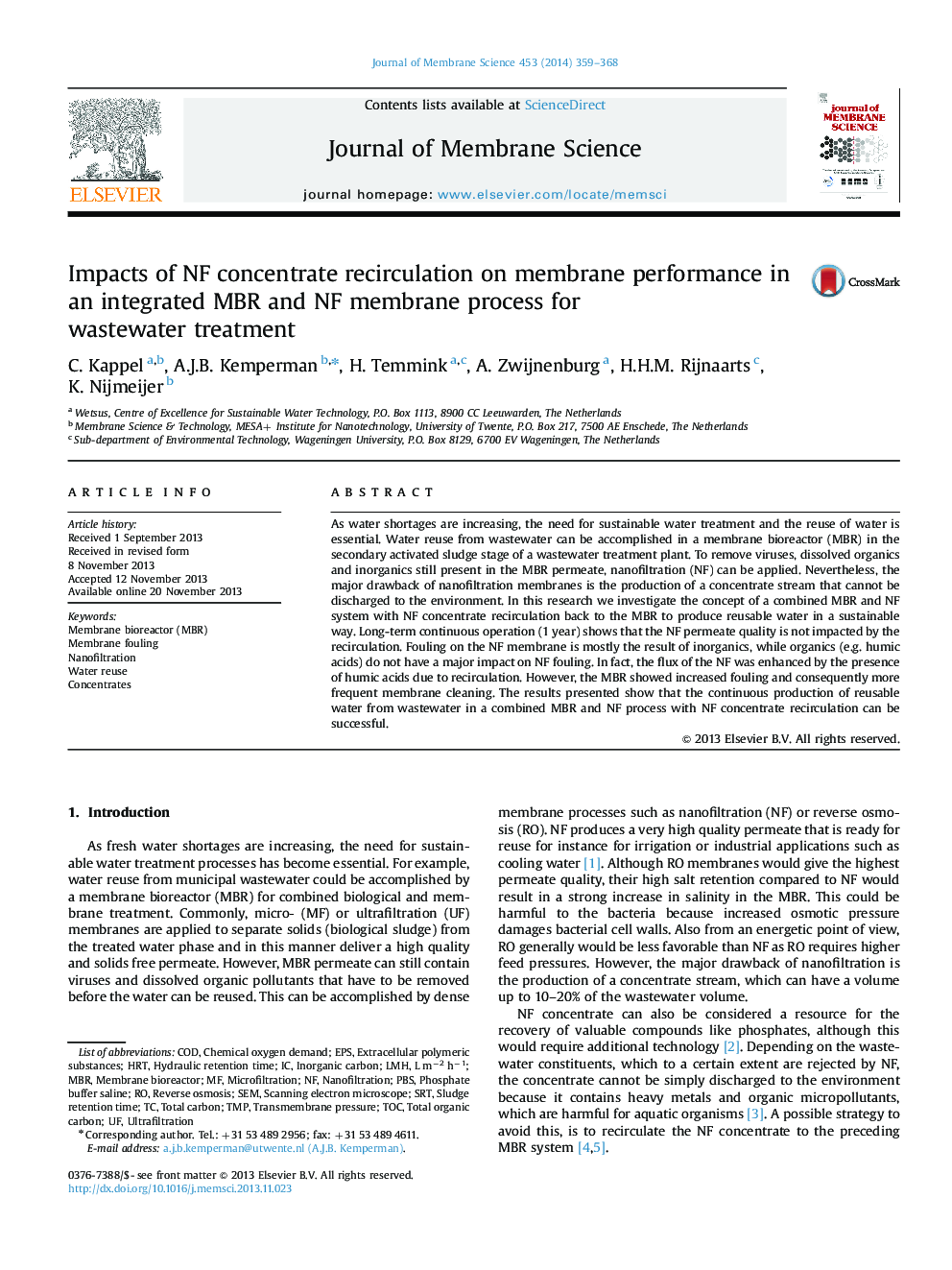| Article ID | Journal | Published Year | Pages | File Type |
|---|---|---|---|---|
| 633797 | Journal of Membrane Science | 2014 | 10 Pages |
•Reusable water from MBR NF with concentrate recirculation has a very good quality.•Phosphorous can be recovered as a valuable product from the NF concentrate loop.•Humic acids decrease the resistance of the scaling layer on the NF membrane.•NF concentrate recirculation decreased the critical flux in the MBR.
As water shortages are increasing, the need for sustainable water treatment and the reuse of water is essential. Water reuse from wastewater can be accomplished in a membrane bioreactor (MBR) in the secondary activated sludge stage of a wastewater treatment plant. To remove viruses, dissolved organics and inorganics still present in the MBR permeate, nanofiltration (NF) can be applied. Nevertheless, the major drawback of nanofiltration membranes is the production of a concentrate stream that cannot be discharged to the environment. In this research we investigate the concept of a combined MBR and NF system with NF concentrate recirculation back to the MBR to produce reusable water in a sustainable way. Long-term continuous operation (1 year) shows that the NF permeate quality is not impacted by the recirculation. Fouling on the NF membrane is mostly the result of inorganics, while organics (e.g. humic acids) do not have a major impact on NF fouling. In fact, the flux of the NF was enhanced by the presence of humic acids due to recirculation. However, the MBR showed increased fouling and consequently more frequent membrane cleaning. The results presented show that the continuous production of reusable water from wastewater in a combined MBR and NF process with NF concentrate recirculation can be successful.
Graphical abstractFigure optionsDownload full-size imageDownload high-quality image (124 K)Download as PowerPoint slide
